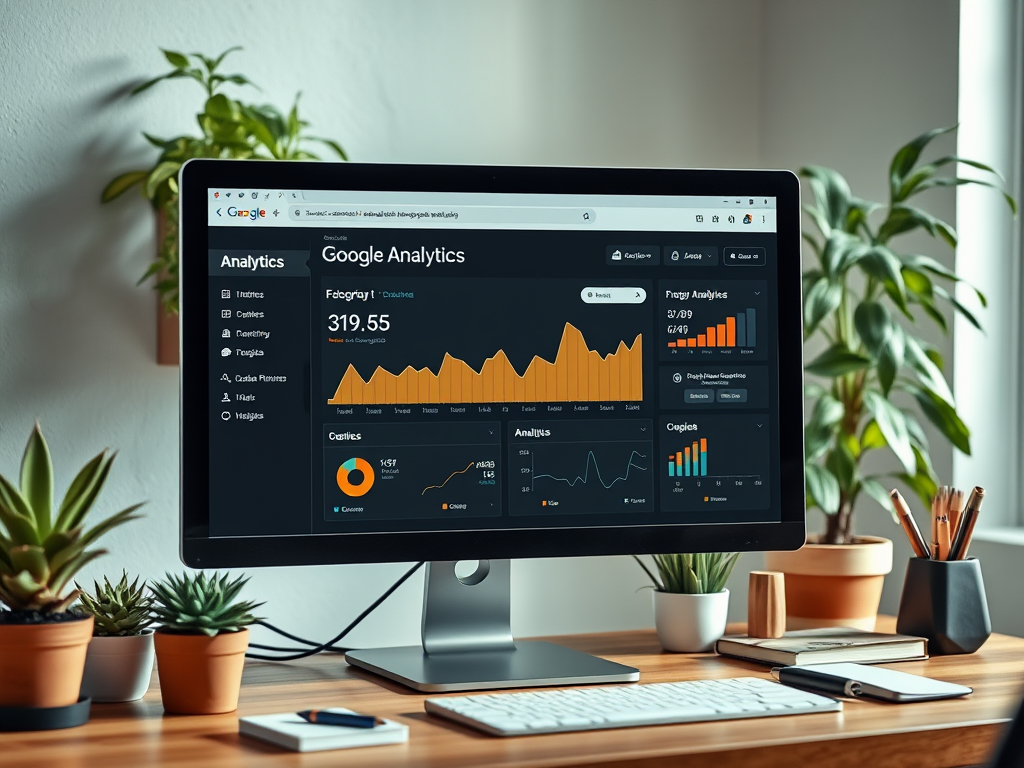
How to Use Google Analytics Effectively
In an ever-evolving digital landscape, utilizing data-driven insights has become crucial for businesses striving for success. As a website owner, having a grasp of how visitors interact with your site can unlock untold opportunities for optimization. Google Analytics, a powerful tool offered by Google, empowers users to track various metrics regarding site performance. Through this platform, you can identify trends, recognize user behaviors, and enhance your online strategy. While the sheer volume of data can seem overwhelming, mastering its functionalities can provide clarity and direction. This article serves as your guide to navigate Google Analytics effectively and turns your raw data into actionable insights.
Setting Up Google Analytics

Before diving into analytics and measurement, it is essential to properly set up Google Analytics. Without the right foundation, even the most sophisticated functionalities will be worthless. Start by creating a Google Analytics account that will serve as the hub for your tracking and reporting needs. After account creation, the next crucial step is to link your website to this account. This linkage allows Google Analytics to begin collecting important data from your website. Once linked, you’ll need to install a tracking code that communicates with Google’s servers. This code is typically inserted into the header of your HTML, enabling the collection of user data whenever someone visits your pages.
Creating Your Google Analytics Account
To initiate your journey with Google Analytics, visit the Google Analytics website and click on the “Start for free” button. You’ll be required to create or sign in to your Google account. After signing in, proceed to fill in your account name, property name, and reporting timezone. This information is key as it determines how data will be reported. Once created, don’t forget to accept Google’s terms and conditions. A well-set account structure will help you revisit insights later with ease.
Installing the Tracking Code
After setting up your account, the installation of the tracking code is paramount. Google provides a piece of JavaScript code that you need to place on every page of your website. This code gathers user data and sends it back to your Google Analytics account for processing. It can be inserted manually or through website plugins, depending on your platform. Ensuring that this code is correctly implemented opens the door for extensive data tracking. Missing even one step in this process can lead to inaccurate data collection and analysis.
Understanding the Google Analytics Dashboard

The Google Analytics dashboard functions as your command center, providing a gateway into user behavior and traffic performance. Familiarizing yourself with its layout helps turn data into real-world insights. First, take note of the left sidebar, which contains the main navigation menu where you can access a variety of reports. Features like real-time analytics, audience demographics, and traffic sources will become your go-to sections for assessing performance. As you explore, consider customizing your dashboard to better suit your analytical needs. Tailoring the dashboard will make it easier to access the core metrics that matter to your business.
In your navigation, focus on certain key features that provide significant insights. For instance, the “Real-Time” report allows you to see user behavior as it happens, which is crucial for time-sensitive campaigns. Similarly, the “Acquisition” section breaks down how users find your site, whether through direct search, referral links, or social media. Other important areas include “Behavior” and “Conversions.” Monitoring these metrics will equip you with a comprehensive view of your website’s effectiveness.
| Metric Category | Description |
|---|---|
| Real-Time | Displays current users on your site, their behavior, and locations. |
| Acquisition | Shows how visitors arrive at your website through various channels. |
| Behavior | Analyzes page views and interactions to understand user engagement. |
| Conversions | Tracks specific actions that you define as valuable, such as sign-ups or purchases. |
Key Metrics to Track
Identifying and understanding key metrics is crucial for gauging your website’s performance accurately. These metrics can reveal vital insights about user behavior, engagement, and marketing effectiveness. Here’s a concise list of essential metrics to track:
- Traffic Sources: Where are your visitors coming from?
- User Engagement: Are users spending time on your site?
- Conversion Rate: Are users completing desired actions?
Each of these metrics informs strategic decisions and helps identify areas requiring improvement. Tracking traffic sources allows you to optimize marketing strategies effectively. Similarly, analyzing user engagement provides insights into the quality of content on your site. Without this comprehensive metric evaluation, you might miss important opportunities for growth.
Utilizing Goals and Conversions
The best way to measure success is by setting up goals within Google Analytics. Goals allow you to define and quantify action points that contribute to your overall business objectives. Determining what a conversion means for your website is crucial in this step. Common examples include completing a purchase, filling out a contact form, or subscribing to a newsletter. Once you’ve identified these goals, you can track how well your site achieves them. With this data, you can continuously refine your marketing strategies for optimal effectiveness.
To set up conversion tracking, navigate to the Admin section of your Google Analytics account. From there, locate the “Goals” option and click to add a new goal. Google provides templates for various types of goals, making this process user-friendly. Enter the necessary details such as goal name, type, and the destination URL for completion. Once established, you’ll start receiving data on how users are interacting with and completing your defined goals. This understanding can directly influence your marketing and operational strategies.
Conclusion
Effectively using Google Analytics can provide invaluable insights into your website’s performance. By understanding how to set it up, what metrics to track, and how to apply this knowledge, you can elevate your online presence. From navigating the dashboard to leveraging advanced features, mastering these tools will significantly enhance your digital strategy. The actionable insights gathered from Google Analytics can help you refine user experiences, increase engagement, and ultimately drive conversions. Take the plunge into data analysis with Google Analytics and watch as your strategies evolve and your website thrives.
Frequently Asked Questions
- What is Google Analytics?
Google Analytics is a web analytics service that tracks and reports website traffic. - Do I need coding skills to set it up?
No, basic understanding of adding code to your site is sufficient. - How often should I check my analytics?
Regularly, ideally weekly or monthly, to keep track of trends and insights. - Can I track more than one site?
Yes, Google Analytics allows you to track multiple websites from a single account. - Is Google Analytics free?
Yes, the standard version of Google Analytics is free to use.